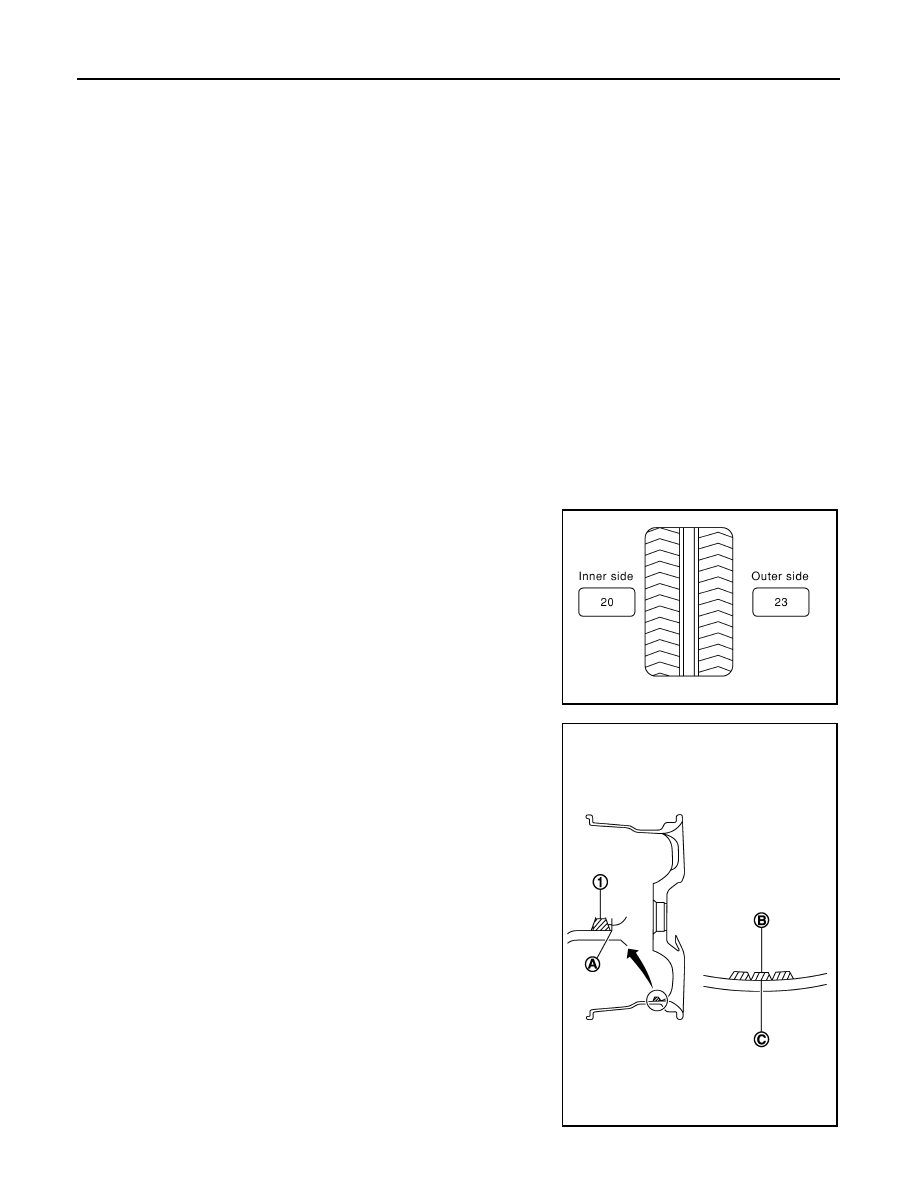Content .. 1323 1324 1325 1326 ..
Nissan Frontier. Manual - part 1325

WT-48
< PERIODIC MAINTENANCE >
WHEEL AND TIRE ASSEMBLY
WHEEL AND TIRE ASSEMBLY
Adjustment
INFOID:0000000009480287
BALANCING WHEELS (ADHESIVE WEIGHT TYPE)
Preparation Before Adjustment
Remove inner and outer balance weights from the road wheel. Using releasing agent, remove double-faced
adhesive tape from the road wheel.
CAUTION:
• Be careful not to scratch the road wheel during removal.
• After removing double-faced adhesive tape, wipe clean all traces of releasing agent from the road
wheel.
Wheel Balance Adjustment
• If a balancer machine has an adhesive weight mode setting, select the adhesive weight mode setting and
skip Step 2. below. If a balancer machine only has the clip-on (rim flange) weight mode setting, follow Step 2.
to calculate the correct size adhesive weight.
1. Set road wheel on balancer machine using the center hole as a guide. Start the balancer machine.
2. For balancer machines that only have a clip-on (rim flange) weight mode setting, follow this step to calcu-
late the correct size adhesive weight to use. When inner and outer imbalance values are shown on the
balancer machine indicator, multiply outer imbalance value by 5/3 (1.67) to determine balance weight that
should be used. Select the outer balance weight with a value closest to the calculated value above and
install in to the designated outer position of, or at the designated angle in relation to the road wheel.
a. Indicated imbalance value
× 5/3 = balance weight to be installed
Calculation example:
23 g (0.81 oz)
× 5/3 (1.67) = 38.33 g (1.35 oz) ⇒ 40 g (1.41 oz)
balance weight (closer to calculated balance weight value)
NOTE:
Note that balance weight value must be closer to the calculated
balance weight value.
Example:
37.4
⇒ 35 g (1.23 oz)
37.5
⇒ 40 g (1.41 oz)
3. Install balance weight in the position shown.
CAUTION:
• Do not install the inner balance weight before installing
the outer balance weight.
• Before installing the balance weight, be sure to clean the
mating surface of the road wheel.
• When installing balance weight (1) to road wheel, set it into the
grooved area (A) on the inner wall of the road wheel as shown
so that the balance weight center (B) is aligned with the bal-
ancer machine indication position (angle) (C).
CAUTION:
• Always use Genuine NISSAN adhesive balance weights.
• Balance weights are non-reusable; always replace with
new ones.
• Do not install more than three sheets of balance weight.
SMA054D
JPEIC0040ZZ